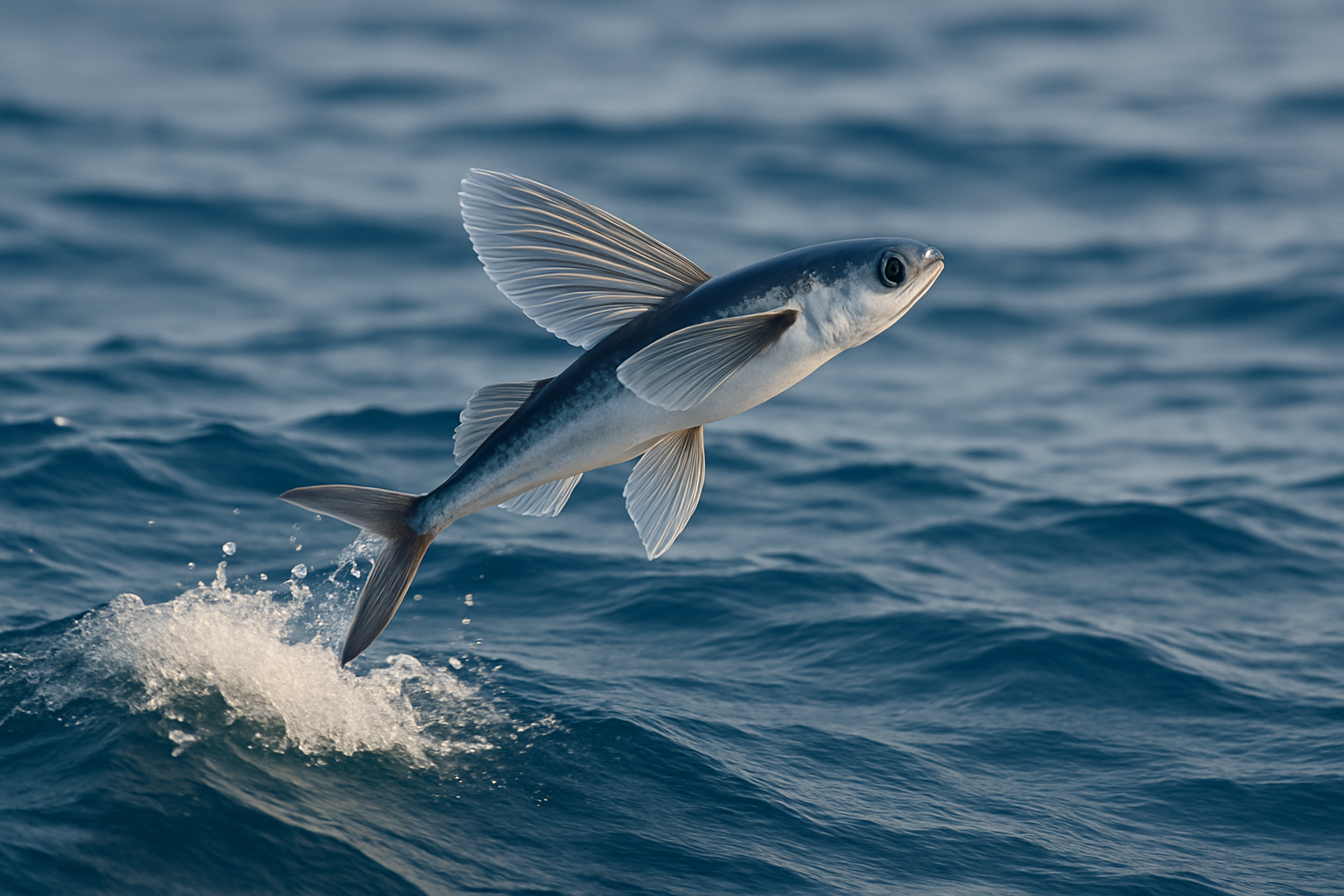Aquatic Acrobats: The Surprising World of Flying Fish
The ocean holds countless wonders, but few are as captivating as the flying fish. These remarkable creatures, capable of gliding above the waves for impressive distances, have long fascinated sailors, scientists, and nature enthusiasts alike. Join us as we dive into the extraordinary world of these aquatic acrobats, exploring their unique adaptations, behaviors, and the crucial role they play in marine ecosystems.

The Evolution of Flight in Fish
The story of flying fish begins millions of years ago when their ancestors first developed the ability to leap out of the water. Over time, natural selection favored those individuals with larger pectoral fins, which provided better gliding capabilities. This gradual evolution led to the development of the four main genera of flying fish we see today: Exocoetus, Hirundichthys, Cypselurus, and Prognichthys.
These fish have undergone remarkable adaptations to facilitate their gliding ability. Their pectoral fins have elongated and flattened, resembling wings more than typical fish fins. Additionally, their tail fins have become asymmetrical, with the lower lobe larger than the upper, providing a powerful thrust to launch them out of the water.
Mastering the Art of Aerial Gliding
Flying fish have perfected a unique technique for taking to the air. They build up speed underwater, reaching velocities of up to 37 mph before breaking the surface. As they emerge, they spread their enlarged pectoral fins and begin to glide. Some species can even flap these fins, extending their time in the air.
These aerial journeys are not just short hops. Flying fish have been observed gliding for distances of up to 655 feet and reaching heights of up to 4 feet above the water’s surface. Their flights typically last between 5 to 10 seconds, but some have been recorded staying airborne for up to 45 seconds.
Ecological Importance and Predator-Prey Dynamics
Flying fish play a crucial role in marine ecosystems as a vital link in the food chain. They feed primarily on plankton and small fish, helping to regulate these populations. In turn, they serve as prey for larger predators such as tuna, marlin, and seabirds.
Their unique ability to take to the air is primarily a defense mechanism against underwater predators. By leaping out of the water, flying fish can quickly escape danger. However, this adaptation has led to the evolution of airborne predators that specifically target them, such as frigatebirds and squid.
Cultural Significance and Human Interaction
Throughout history, flying fish have captured the human imagination. They feature prominently in the folklore and traditions of many coastal cultures, often symbolizing freedom, agility, and the mysterious nature of the sea.
In some regions, flying fish are an important food source and are commercially fished. The eastern Caribbean island of Barbados, known as “the land of the flying fish,” has made this species its national dish. The fishing industry for flying fish contributes significantly to the economies of several island nations.
Conservation Challenges and Future Prospects
Despite their widespread distribution and abundance, flying fish face several conservation challenges. Overfishing in some areas has led to population declines, while climate change and ocean acidification pose long-term threats to their habitats and food sources.
Efforts are underway to better understand and protect these unique creatures. Scientists are using advanced tracking technologies to study their migration patterns and behaviors, while conservation organizations are working to implement sustainable fishing practices and protect critical habitats.
As we continue to explore and understand the oceans, flying fish remind us of the incredible diversity and adaptability of marine life. These remarkable creatures, with their ability to bridge the gap between sea and sky, serve as a testament to the wonders of evolution and the importance of preserving our marine ecosystems for future generations to marvel at and learn from.




